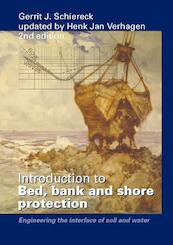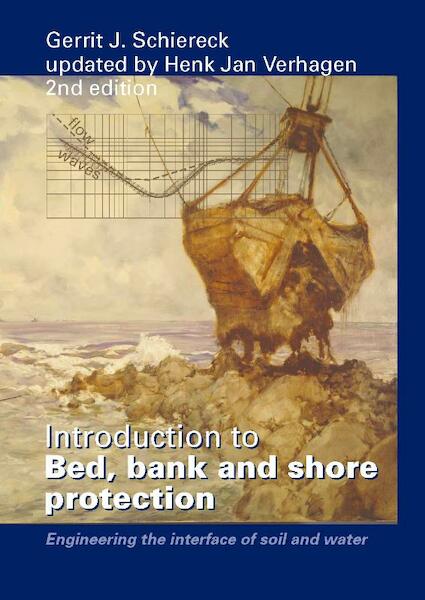| Prijs | € 46,30 |
Niet beschikbaar
ADOBE PDF met Adobe DRM | Oktober 2012 |
Beoordeel dit boek als eerste!Beschrijving
Specificaties
- Auteur
- Gerrit Jan Schiereck, Henk Jan Verhagen
- Uitgever
- Delft Academic Press / VSSD
- ISBN
- 9789065623072
- Formaat
- ADOBE PDF met Adobe DRM
- Publicatiedatum
- Oktober 2012
- Bestandsgrootte
- 15473212 bytes
- Taal
- Engelstalig
- Aantal Pagina's
- 427
Beschrijving
Introduction to bed, bank and shore protection Engineering the interface of soil and water The interface of land and water has always played an important role in human activities; settlements are often located at coasts, river banks or deltas. When the interface consists of rock, erosion is usually negligible, but finer material can make protection necessary. In a natural situation, the interface moves freely with erosion and sedimentation. Nothing is actually wrong with erosion, unless certain interests are threatened. Erosion is somewhat like weed: as long as it does not harm any crop or other vegetation, no action is needed or even wanted. There should always be a balance between the effort to protect against erosion and the damage that would occur otherwise. Moreover, it should be kept in mind that, once a location is protected along a coast or riverbank that has eroded on a large scale, the protected part can induce extra erosion and in the end the whole coast or bank will have to be protected. So, look before you leap, should be the motto. A lot of cases remain where protection is useful. Along canals, rivers and estuaries, bank protection is often needed to withstand the loads caused by flow, waves or ships. Shore protection structures include seawalls, revetments, dikes and groynes. Bed protection is necessary where bottom erosion could endanger structures, like bridge piers, abutments, in- or outlet sluices or any other structures that let water pass through. Contents: 1. Introduction 2. Flow - Loads 3. Flow- Stability 4. Flow - Erosion 5. Porous Flow - General 6. Porous Flow - Filters 7. Waves - Loads 8. Waves - Erosion and stability 9. Ships 10. Dimensions 11. Protections 12. Environment 13. Construction Appendix A: Materials properties Appendix B: Examples Symbols References Index. Published by VSSD hardback version ISBN 978-90-6562-306-5 ebook version ISBN 978-90-6562-307-2 URL on this book: http://www.vssd.nl/hlf/f007.htm About the authors Gerrit Jan Schiereck graduated at Delft University of Technology in 1972 in hydraulic engineering. He started working for Rijkswaterstaat (the Dutch public works department, responsible for sea defence, river management, roads etc.) and was involved in many projects (e.g. Eastern Scheldt storm surge barrier, watermanagement Netherlands delta area, inland navigation). In 1992 he became associate professor in hydraulic engineering at Delft University until 2000 when he returned to Rijkswaterstaat. Henk Jan Verhagen graduated at Delft University of Technology in 1978. After working for Royal Boskalis Westminster he joined the Ministry of Public Works of the Netherlands and was involved for 10 years in consultancy for sea defences. In 1990 he started educating foreign students in Hydraulic Engineering at Unesco-IHE and is since 2000 associate professor at Delft University of Technology in coastal engineering.
Schrijf een recensie
Specificaties
- Auteur
- Gerrit Jan Schiereck, Henk Jan Verhagen
- Uitgever
- Delft Academic Press / VSSD
- ISBN
- 9789065623072
- Formaat
- ADOBE PDF met Adobe DRM
- Publicatiedatum
- Oktober 2012
- Bestandsgrootte
- 15473212 bytes Kb
- Taal
- Engelstalig
- Aantal Pagina's
- 427













